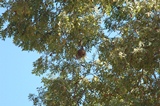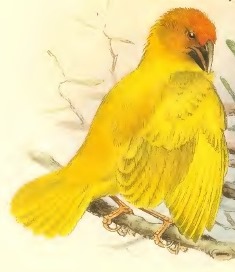Weaver news
| Ploceus holoxanthus was described by Hartlaub (1891) and the name means "Entirely Yellow" (Greek: holos, complete, entire; xanthos, yellow). Later this taxon was considered to belong to the Eastern Golden Weaver Ploceus subaureus, commonly known as Yellow Weaver (at least in southern Africa). Ploceus holoxanthus, or Ruvu Weaver, is now thought to be a valid species (see news). So why was it not initially kept as a separate species? Important changes to the taxon Ploceus holoxanthus:
So Sclater 1930 and other subsequent authors simply considered holoxanthus as a synonym of Eastern Golden Weaver. The basic problem is that the Ruvu Weaver is similar to Eastern Golden Weaver, and few Ruvu Weaver specimens were known.
ReferencesHartert E 1907 Notes on African birds. Novitates Zoologicae 14:484-503.Hartert E 1919 Types of birds in the Tring Museum. B. Types in the general collection. I. Corvidae to Meliphagidae. Novitates Zoologicae 26:123-178. Hartlaub G 1891 Vierter Beitrag zur Ornithologie der ostlich-äquatorialen Lander und der ostlichen Kustengebiete Afrikas. Abhandlungen der Naturwissenschaftlichen Vereins zu Bremen 12: 1-46. Reichenow A 1894 Die Vogel Deutsch-Ost-Afrikas. Geographische verlagshandlung Ditrich Reimer, Berlin. Reichenow A 1904 Die Vogel Afrikas. Band 3. 1904-05. J Neumann, Neudamm. Sclater WL 1930 Systema Avium Aethiopicarum. Vol. 2. British Ornithologists' Union, London. Shelley GE 1905 The birds of Africa, comprising all the species which occur in the Ethiopian Region. Vol. 4, Part 2. RH Porter, London. Zedlitz OG 1916 Das Süd-Somaliland als zoogeographisches Gebiet: Eine ornithologische Studie. Journal fur Ornithologie 64: 1-119. |











